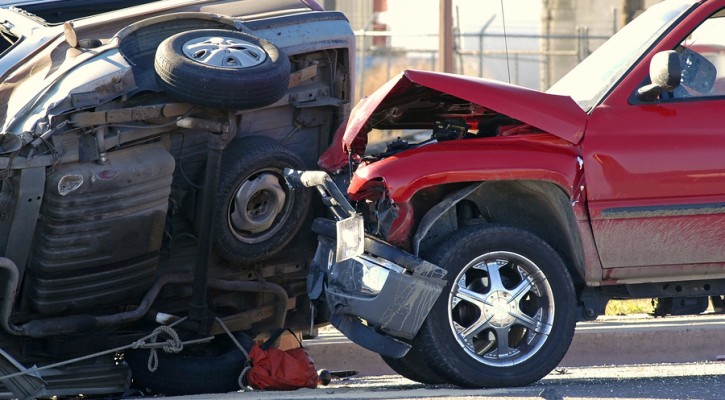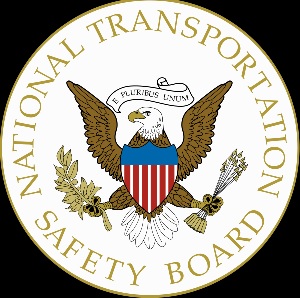Tag Archive: NTSB

NTSB Reveals Its Most Wanted List For 2016
January 15, 2016
This week the National Transportation Safety Board (NTSB) presented its 2016 Most Wanted List on transportation safety issues. While the most wanted list involves all forms of transportation including trains and planes, there were some significant items for motor vehicle transportation. Some items on the most wanted list apply not only to motor vehicles but to other forms of transportation as well.
Reduce Fatigue-Related Accidents
In one of those issues that cuts across all types of transportation. One study showed that 43 percent of drivers report having fallen asleep or nodded off at the wheel at least once in their lifetime. The NTSB is calling on industry to conduct more research into ways that technology can be used to track work hours and performance. It’s also calling on industry to develop fatigue management programs to prevent drivers, pilots, etc. from working while fatigued.
Disconnect from Deadly Distractions
Distractions are another issue that spans all forms of transportation. While the aviation and trucking industries have federal regulations that limit distracting devices, the states have been slow to create laws banning texting and limiting the use of cell phones by drivers. The NTSB is calling for laws that limit not just hand held but also hands free cell phones by drivers.
Promote Availability Of Collision Avoidance Technologies in Highway Vehicles
The NTSB is calling for the requirement that the following technologies, available now as optional equipment, be added as standard equipment in all motor vehicles made and sold in the US;
- collision warning,
- adaptive cruise control,
- autonomous emergency braking (AEB),
- lane departure warning,
- blind spot detection, and
- advanced lighting technology.
Strengthen Occupant Protection
Seat belts have been proven to save lives. Now the NTSB is calling for seat belt use in school buses, motor coaches, and other commercial vehicles. They’re also calling for strengthening of passenger compartments on buses and trains to prevent ejections in a crash.
End Substance Impairment in Transportation
Drunk and drugged driving is still a major problem in the US and account for almost one-third of all highway traffic deaths each year. The NTSB is calling on states to lower the legal limit for alcohol from 0.8 BAC down to 0.5 BAC. Currently, the highest BAC allowed in European countries is 0.5 with some countries going as low as a 0.2 or 0.0 BAC limit.
For more information, read: NTSB Unveils 2016 Most Wanted List, Stresses Technology

Collision Avoidance Systems Should Be Standard Equipment On All Vehicles: NTSB
June 12, 2015
Collision avoidance systems should be standard equipment on all new vehicles according to a new report issued by the National Transportation Safety Board (NTSB). The NTSB is the federal agency whose job is to investigate transportation crashes of all types; aircraft, train, ship, bus, or truck. The report came about as a result of the investigation of just nine rear end motor vehicle crashes involving 48 vehicles that resulted in 28 deaths and 90 injuries.
In the US, rear end crashes are the most common type of crash involving two or more vehicles. According to the NTSB report, rear end crashes make up almost half of all motor vehicle crashes involving two or more vehicles. In the years 2011 and 2012, rear end crashes resulted in the deaths of 3,491 people and more than a million injuries. In 2012 alone, there were more than 1.7 million rear end crashes.
There are several reasons for rear end collisions including; driver distraction, false expectations of of driver intent, unsafe speed, and fatigue. However, the most common reason, according to the National Highway Transportation Safety Administration (NHTSA) is driver distraction. According to NHTSA, 87 percent of rear end crashes are due to driver distraction.
Several different types of collision prevention systems have been available over the past 20 years including;
- Collision warning systems (CWS) that alerted a driver to the possibility of a collision.
- Adaptive cruise control (ACC) that automatically maintains a safe following distance between vehicles ahead.
Both the CWS and ACC systems are passive systems that still required the driver to take action to avoid a rear end crash but the driver may not react in time.
The latest version, known as the collision avoidance system (CAS) combines the CWS and ACC into an active system that takes control of the vehicle to avoid a crash. If the CAS system senses a probable crash, it will automatically apply the brakes in time to avoid the crash. The CAS system can respond much faster than the human driver.
Using the data from the 2011 and 2012 crash database, the NTSB estimated that the use of a collision avoidance system could have saved up to 2,220 lives. They also estimated that injuries could have been avoided or reduced in 93.7 percent of those crashes.
Collision avoidance systems are already available in a few high end model cars. The NTSB is making the following recommendations regarding collision avoidance systems:
- For manufacturers to install forward collision avoidance systems as standard features on all newly manufactured passenger and commercial motor vehicles,
- For NHTSA to expand the New Car Assessment Program to include a graded rating to assess the performance of forward collision avoidance systems, and
- For NHTSA to expand or develop protocols for the assessment of forward collision avoidance systems in passenger and commercial vehicles.
Read more: Safety Shouldn’t Be a Luxury Feature

Distracted Driving Top Priority For NTSB
January 21, 2015
The National Transportation Safety Board ( NTSB ) has come out with its list of top safety priorities and, given the nature of the agency’s work, the top pick may be a bit surprising but, for safety experts, it shouldn’t be a surprise at all.
The NTSB is the federal agency known by most Americans as the agency that investigates aircraft crashes and, most often without any living witnesses, are tasked with finding the cause of the crash. However, the NTSB’s mission isn’t limited to aircraft incidents. The NTSB’s mission is to ensure the safety of any type of transportation including; aircraft, ships, trains, and motor vehicles.
It’s the motor vehicle side side of the NTSB’s work that that is drawing the most attention in this year’s list of top priorities. The top item among their list of safety priorities for 2015 is distracted driving.
According to the website Distraction.gov:
- 3,328 people were killed in distraction-affected crashes in 2012.
- An estimated 421,000 people were injured in motor vehicle crashes involving a distracted driver, this was a nine percent increase from the estimated 387,000 people injured in 2011.
- At any given daylight moment across America, approximately 660,000 drivers are using cell phones or manipulating electronic devices while driving, a number that has held steady since 2010.
- Five seconds is the average time your eyes are off the road while texting. When traveling at 55 mph, that’s enough time to cover the length of a football field blindfolded.
To compare; worldwide, there were 459 fatalities as a result of aircraft related incidents in 2013 according to the Geneva-based Bureau of Aircraft Accidents Archives. In 2013 the US had a total of 224 aircraft related fatalities including those aboard the aircraft and people on the ground.
If the US had experienced an aircraft related fatality rate equal to the number of distracted driving deaths, people would stop flying. It’s no wonder then that the NTSB needs to place its top priority on the problem of distracted driving.
Read more: NTSB 2015 MOST WANTED LIST OF TRANSPORTATION SAFETY IMPROVEMENTS
